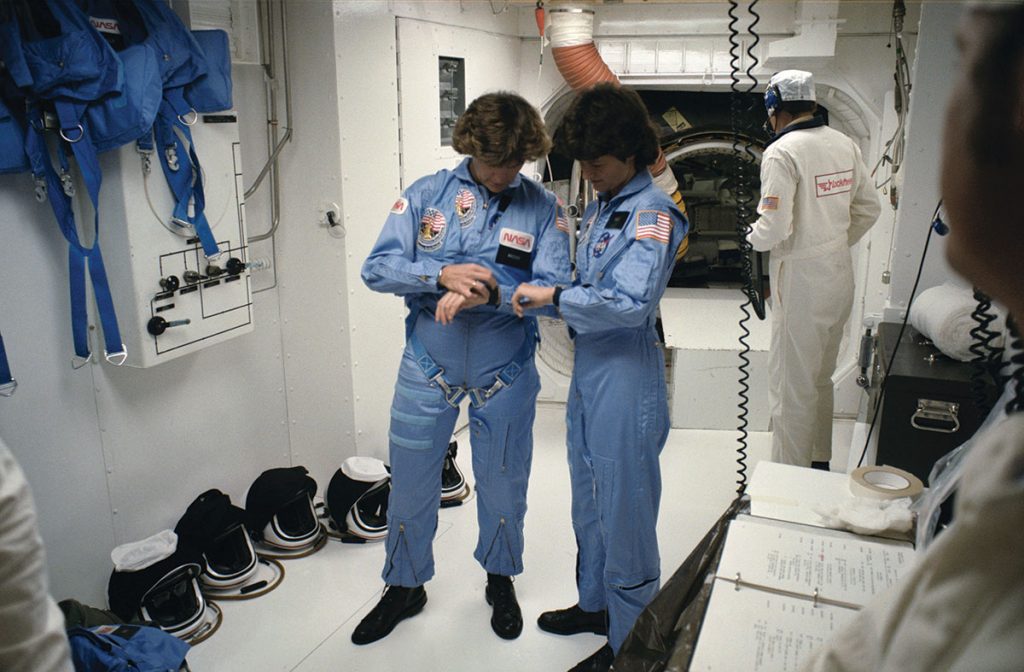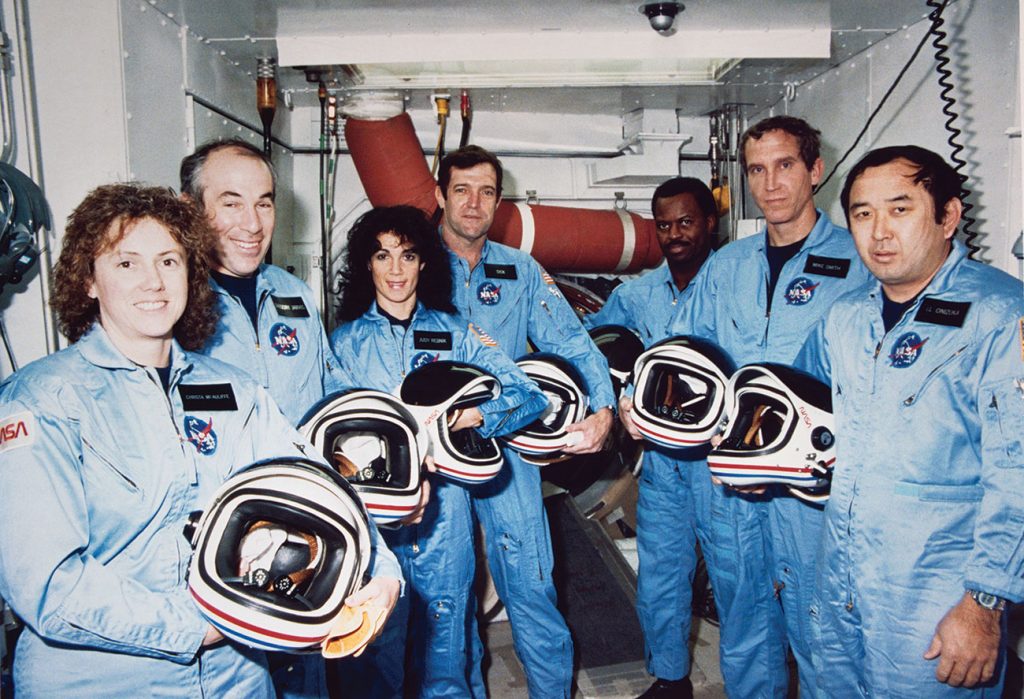Former astronaut Kathy Sullivan helps to celebrate Ohio’s role in space

Feature image courtesy of University of California, Santa Cruz
Fifty years ago, on July 20, 1969, Neil Armstrong took the first steps on the moon, making—in his famous words—“a giant leap for mankind.” Thirty five years ago, in 1984, America achieved another space milestone milestone when Dr. Kathy Sullivan became the first American woman to walk in space as part of NASA’s Space Shuttle program. Armstrong and Sullivan have quite a bit in common. There’s that whole, “gone into orbit thing,” obviously, but there’s also the lesser-known fact that both hold ties to the Buckeye State.
Armstrong was born in Wapakoneta and worked in the Cleveland area as a young adult for the National Advisory Committee for Aeronautics, the predecessor to NASA. Sullivan moved to Columbus after leaving NASA to serve as President and CEO at COSI and as Director of Ohio State’s Battelle Center. While there, she helped to launch the Ohio STEM Learning Network to help prepare the next generation of engineers and innovators. After completing an appointment at the National Oceanic and Atmospheric Administration in Silver Spring, Maryland, Sullivan returned to Columbus.

Now, as the nation prepares to commemorate the golden anniversary of the moon landing, Sullivan shared her thoughts on the significance of the event and her experiences as an astronaut. Here’s what she told (614).
When we reflect on the milestone of the moonwalk, we also remember the “sustained effort” of engineers and the countless others who helped to make it happen, Sullivan emphasized. “The moonwalk was one piece of a 1,500 piece complicated jigsaw puzzle. While it’s the one we were able to watch, there are many other pieces we weren’t able to see,” she said. “Neil got there because a country came together, [made] a strong commitment, worked through the hard parts, stuck it out.” She added that this type of determination and focus can help to solve some of the challenges we face today.
FLIGHT AND SPACE EXPLORATION ARE PART OF OHIO’S HISTORY
As the home state of the Wright brothers, John Glenn, Jim Lovell, Judith Resnick, and of course Armstrong, Ohio is not accidentally on the map as a leader in aviation and space. Sullivan said that the state historically has had schools and communities that developed kids’ “skills, talents, dreams and imaginations”—a foundation for mechanics and innovation. Of Ohio’s future role in space Sullivan said, “The frontier spirit needs to be matched with knowledge, skills, talents. You have to work at the parts that are hard, at overcoming them.”
BROUGHT TO YOU BY
“SPACEWALK” IS THE WRONG TERM
While gravity on the moon allowed Armstrong to moonwalk, Sullivan said “spacewalk” isn’t really an accurate term to describe her experience outside the shuttle. “NASA calls them EVAs—extra-vehicular activities, something you’re doing outside the spacecraft,” she said. “In orbit, you’re in microgravity. It’s a lot like scuba diving, you move hand over hand, not foot over foot.” Sullivan and her fellow astronauts trained for their EVAs in giant tanks of water wearing spacesuits weighted for buoyancy.

SPACESUITS ARE ANDROGYNOUS
Recent headlines talked about a planned all-female spacewalk (or EVA) that had to be canceled due to NASA not having enough spacesuits designed for womens’ bodies. Sullivan said there’s more nuance to the story. Spacesuits are made of segments of different sizes that can be swapped in and out. For example, there’s a piece that runs from the knee to hip, and another designed for the upper torso. “It’s kind of a Mr. Potato Head Suit,” she said. Budget constraints meant NASA couldn’t make as many diverse sizes for each part of the space suit as they ideally would have been able to. Sullivan said the upper torso piece is the most difficult: it needs to be wide enough so that a computer can be bolted onto it, which is challenging when the astronaut has a small frame. She doesn’t fault NASA for this. “NASA set out to try to design a suit that could fit anyone and everyone,” she said. Because the suits are now 30 years old, she hopes to see more funding allocated to updating suits.

THERE’S A FINITE MARKET FOR SPACE TOURISM
Sullivan believes predictions for private space exploration are overblown. “Think of the airlines. Millions of Americans want to go back and forth from the east coast to the west coast,” she said. “Show me the market for space besides government astronauts […]. I’m skeptical that there’s that kind of demand for going in and out of low-earth orbit.”
Sullivan will speak at the Ohio History Center on July 20th as part of an event commemorating the 50th anniversary of Armstrong’s moonwalk. For tickets, visit ohiohistory.org/participate/event-calendar/ohio- history-center/moon
BROUGHT TO YOU BY



